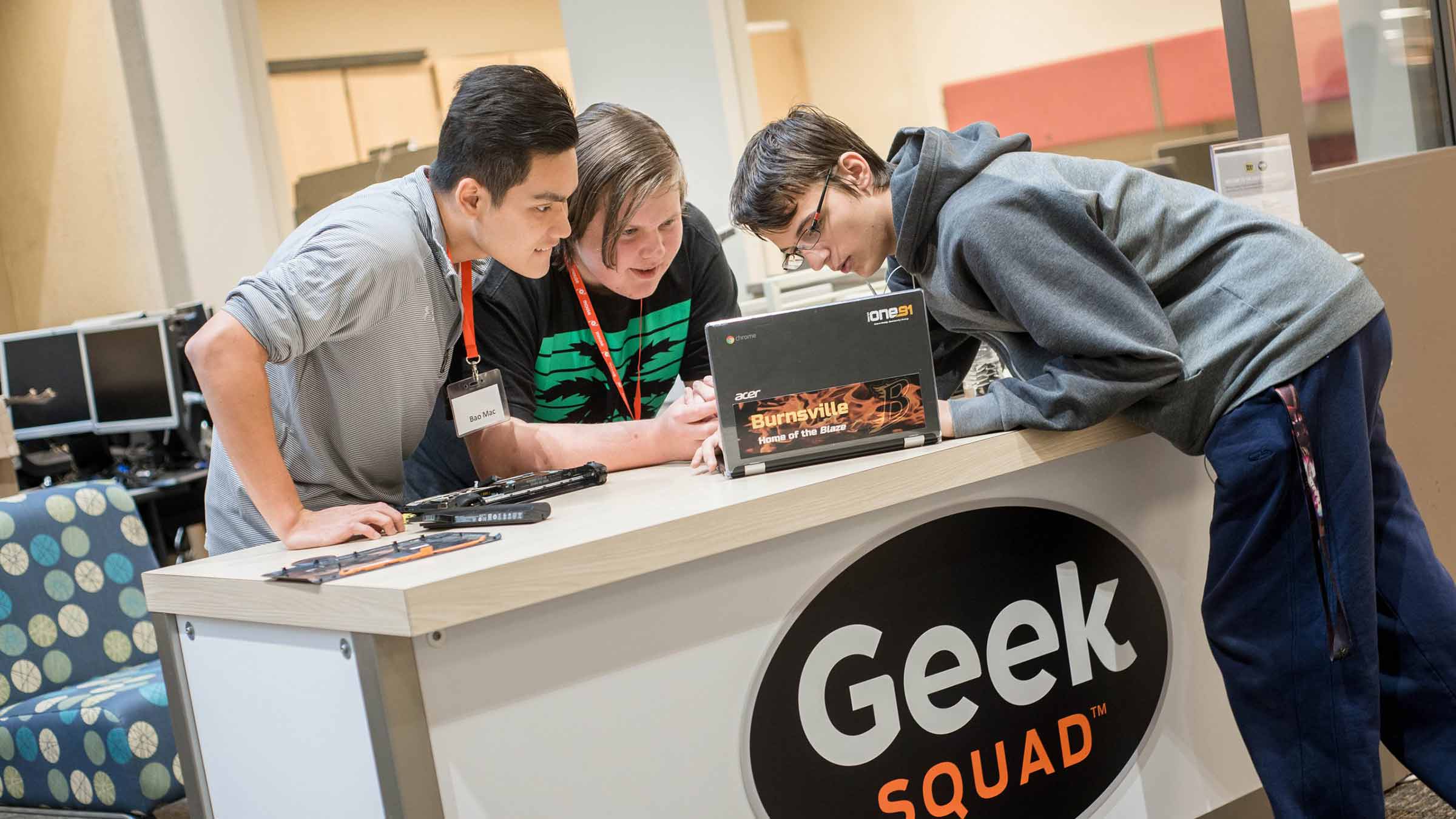
I joined Greater Twin Cities United Way in 2015 at an exciting time: our centennial. One hundred years of grantmaking. As the third generation in my family to work at United Way, both legacies of excellence are important to me. As I started my career, I was excited to get to work fueling lasting change in our region.
Back then we engaged in discussions daily on how philanthropic investments could serve as a catalyst for innovation, and over time, United Way grew in the understanding of what it would take to transform our community. We knew we needed to leverage our power as a grant maker in a different way, to center equity not only in what we do, but in how we do it.
With the board-led invitation to “embed equity in all that we do,” I studied our Career Academies grantmaking practices and nonprofit partner experiences to determine if a shift in funding strategy would better support our partners. As a result, in 2016 we chose to transform our strategy to center opportunities for our funded nonprofit partners to take risks and test emerging ideas that are in service to United Way’s Theory of Philanthropy.
As an organization, we needed to have deep and necessary conversations about power, which was affirmed in a 2018 Stanford Social Innovation Review (SSIR) article, stating “Grantmakers that effectively advance equity hit the ‘sweet spot’ on three dimensions of power: building power, sharing power and wielding power.” Our Career Academies work strives to center these dimensions with our partners and the students they support.
Career Academies is a United Way innovation initiative that prepares high school students for zero college debt and in-demand, high-wage careers through real-world experiences and training.
During our review, we realized that grantmaking wasn’t enough to affect systems change. We needed to pair our financial support with a team to provide individual consulting and a statewide learning Community of Practice for school partners to plan, ideate and put strategy behind their visions.
Our role was to share power and walk alongside our partners, supporting them with the tools, exemplars and connections to enable success, including technical assistance, facilitated field experiences, and strategic planning sessions. How we did our grantmaking allowed our partners the time and space to carry forward transformational work within career pathways.
Scaling rapid-cycle change wasn’t initially the vision for Career Academies. When the program began in 2015, the focus was simply to “meet employer talent needs.” However, as we listened to students, teachers and other community members, we leaned into SSIR’s second dimension of wielding power.
The team took our learnings back to internal stakeholders and the United Way board and transformed the initiative’s vision from employer- to student-centered: Youth have clear pathways through college to wealth-building careers with zero debt. This revised vision for wealth and power building helps meet employers’ needs and is aligned with our value of equity.
Today we support our K-12 partners to step into this power and lead conversations that center young people in negotiations. This allows employers to take an active role in the classroom as workplace mentors and in support of each student that joins their company. Connecting youth to high-paying career options could be seen as a dramatic increase in labor costs. However, Career Academies is focused on opportunities for students to progress in both wage and career advancement, thereby reducing turnover and increasing job satisfaction, benefitting both students and employers.
The most frequent response I get regarding Career Academies is “Zero debt? I wish that was an opportunity when I was in school.” While building wealth is an important part of the equation, we’ve learned to broaden the definition of wealth and to acknowledge that building power is just as important. Therefore, we include our stakeholders in decision-making spaces to ensure systems players and the youth they serve both have access to areas that influence outcomes.
By broadening the definition of wealth, we’re centering what youth have told us: knowledge is wealth, family and community history is wealth, and networking is wealth. When we add power to the conversation, we’re suddenly not only talking about young people building wealth for themselves and their families — we’re talking about them stepping into their rightful positions to lead our companies and communities.
This leadership is evident in St. Louis Park High School, where students asked their school board to abolish the gifted and talented program and instead focus on the talents of all young people in their schools. It’s demonstrated in the Anchor Mentor Program at White Bear Lake, where students trained in mental health first aid provide mentorship to middle school students starting their career journey.
It is through our understanding of power that we have been able to work side-by-side with 17 Career Academies districts in urban, suburban and rural communities throughout Minnesota as they transform their educational spaces. As our districts blend college course work with career-centered curricula, our team is supporting, scaling and documenting innovation for statewide replication.